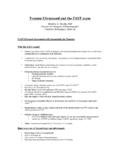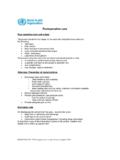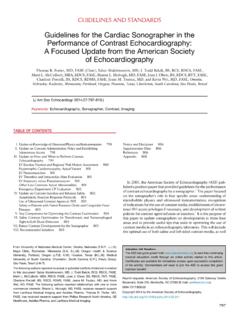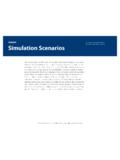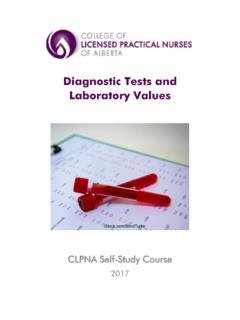Transcription of Abdominal Trauma - Unlimited Online Nursing CEUs for …
1 Abdominal Trauma Reviewed December, 2015, Expires December, 2017 Provider Information and Specifics available on our Website Unauthorized Distribution Prohibited 2015 , , , LLC By Wanda Lockwood, RN, BA, MA The purpose of this course is to outline the different types of Abdominal injuries that may result from blunt or penetrating Trauma , including diagnosis, symptoms, associated injuries, and treatment approaches. Goals Upon completion of this course, the healthcare provider should be able to: Describe 3 types of blunt injuries. Discuss penetrating injuries. Explain the 3 sections of the Abdominal cavity and the organs in each. Discuss primary and secondary surveys. Describe physical signs of bleeding, including Cullen s sign and Grey Turner s sign. Describe the 4 classes of hemorrhagic shock. Explain the APVU and AMPLE methods of neurological assessment. Describe key information needed during history for motor vehicle accidents and penetrating Trauma .
2 Explain FAST and DPL. Discuss hepatic Trauma , including grading. Discuss splenic Trauma , including grading. Discuss gastric Trauma , including grading. Discuss intestinal Trauma , including at least 6 signs of peritonitis. Discuss pancreatic Trauma , including grading. Discuss bladder Trauma and at least 4 indications of bladder rupture. Describe the difference between intraperitoneal bladder rupture and extraperitoneal, including implications. Discuss renal Trauma , including grading. Discuss adrenal Trauma . Discuss aortic Trauma . Purpose Introduction Wikimedia Commons Abdominal Trauma is responsible for about 10% of all deaths related to trama. Abdominal Trauma may involve penetrating or blunt injuries. Penetrating injuries include gunshot and shrapnel injuries, impalements, and knifings. Penetrating injuries often result in injury to hollow organs, such as the intestines. The liver is the most commonly injured solid organ.
3 Gunshot wounds are classified as high energy and may result in extensive damage, especially if the bullet ricochets off of bone. Patients are at increased risk for both hemorrhage and peritonitis, especially with intestinal injury. The most common injuries from gunshot wounds include: o Small intestines: 50%. o Colon: 40%. o Liver: 30%. o Vascular structures: 25%. The most common injuries from stab wounds include: o Liver: 40%. o Small bowel: 30%. o Diaphragm: 20%. o Colon: 15%. Blunt Trauma is more common than penetrating and may result from motor vehicle accidents, sports accidents, blows, falls, or explosions. Blunt Trauma is more difficult to assess because injuries are less obvious, so massive blood loss may occur before injuries are detected. There are 3 types of blunt injuries: 1) crush, which results from compression, 2) shear, which involves tearing, and 3) burst, which relates to sudden increased pressure (such as from an explosion).
4 Motor vehicle accidents, the most common cause of blunt Abdominal injuries, often result in hepatic injury to the passenger if impact is on the passenger s side and splenic injury to the driver if impact is on the driver s side. A tremendous force is needed to fracture a pelvis, so any time a Trauma patient presents with pelvic Trauma , Abdominal Trauma should be suspected. Abdominal cavity Thoracic abdomen Liver, spleen, diaphragm, stomach The ribs provide some protection although the organs are vulnerable to both blunt and penetrating Trauma . Retroperitoneal abdomen Kidneys, ureters, pancreas, duodenum Organs are generally better protected than organs in the thoracic abdomen as they are behind other organs. True abdomen Small intestines, colon, bladder The large and small intestines are vulnerable to rupture with blunt Trauma . The bladder is somewhat protected behind the symphysis pubis, but a full bladder is especially vulnerable to rupture.
5 Common Abdominal injuries include: Hepatic lacerations. Splenic rupture. Bladder rupture. Mesenteric artery tears. Great vessel tears. Diaphragmatic rupture. Gastric rupture. Renal injury. Pancreatic injury. Retroperitoneal hematoma. Multiple injuries are common, so any type of Abdominal injury should raise suspicions of associated injuries. Initial assessment As with all Trauma patients, assessment should begin with the primary survey, during which the patient is at least partially disrobed for examination, placed on monitors (BP, cardiac, pulse oximeter) as indicated, and two large-bore intravenous lines placed. It IV access cannot be achieved, then a large-bore central line may be placed in the femoral vein, subclavian, or internal jugular vein. In some cases, venous cutdown may be indicated. An interosseous line may also be placed, especially in children, if other access is not possible. Airway, breathing, and circulation (ABCs) are checked immediately, often while resuscitation efforts are occurring.
6 The patient must be assessed for blood loss. With blunt Trauma , severe bleeding may occur rapidly, so the patient must be observed for signs of bleeding and blood loss estimated. Any impaled items, such as a knife stuck into the abdomen, should be stabilized with bulky dressings until scans are completed and/or the patient is taken for surgical removal. Protruding organs or eviscerations should be covered with sterile saline dressings. Oxygen is usually administered with a non-rebreather mask, and NG tube inserted (if there is no facial Trauma ), and blood samples (type Primary survey: ABCs and crossmatch and CBC) and urine specimen obtained per indwelling catheter. Physical signs of internal bleeding include: Abdominal pain. Guarding, rigidity. Bruising, crepitus, swelling (especially across chest and pelvis from seat belt and or shoulder harness). Abdominal distention, deformity. Tachycardia, hypotension. Pallor.
7 Evisceration. Cullen s sign: Bruising about the umbilicus (may indicate hemoperitoneum or retroperitoneal bleeding but may take 12 hours to develop). Grey Turner s sign: Bruising over flank (may indicate retroperitoneal bleeding but may take 12 hours to develop). Hematuria. Blood or semen at urethral meatus (from injury to prostate). Inability to urinate. Hemorrhagic shock classification Class Blood loss Signs and symptoms I 15% Mild tachycardia (90-100 bpm), localized swelling, and frank bleeding. II 15 to 25% Tachycardia, prolonged capillary refill and increased diastolic BP. III 25 to 50% Above signs (any) as well as hypotension, confusion, decreased urinary output, and acidosis. IV >50% Hypotension and acidosis unresponsive to resuscitation. Geriatric patients must be observed carefully as they may have less obvious signs of shock for a variety of reasons. Cardiac response to hypovolemia is often lessened because of myocardial pathology or medications, such as -blockers and calcium channel blockers.
8 Metabolic acidosis (decreased serum bicarbonate and increased base deficit (> -6) or increased serum lactate) may result from hemorrhage and hypovolemia. Secondary survey: DE, ABPU, and AMPLE The patient is examined more thoroughly to determine which diagnostic tests are indicated (often after initial standard x-rays of later cervical spine, supine chest , and pelvis). D: Neurological status (D for disability) is assessed. A quick assessment may be done using the AVPU method: A: Is the patient alert? V: Is the patient verbal? P: Is the patient responding only to verbal stimuli? U: Is the patient completely unresponsive. If the patient is alert (A) and verbal (V), then the AMPLE method may be used to ask a series of basic informational questions: A: Do you have any allergies? M: Are you taking any medications? P: What is your past medical history and (if applicable) are you pregnant? L: When did you last eat? E.
9 What events led to the Trauma , and when did you have your last tetanus vaccination? E (for exposure): The patient is completely disrobed, if possible. If there is any danger of cervical Trauma or the patient cannot be moved, the clothing should be cut off. If forensics are involved (as in shootings and knifings), care must be used to avoid cutting through or damaging areas of clothing that may provide evidence, such as where a bullet has entered clothing. Protocols for collection of evidence should be carefully followed. NOTE: In reality, the Primary and secondary surveys may be done concurrently or overlap, depending on the patient s condition. Key information needed during history Motor vehicle accidents Crash mechanism (what happened). Use of seatbelt and chest restraints. Amount of external damage to the car. Airbag deployment. Integrity of windshield. Deformity of steering wheel Loss of consciousness. Ambulatory status. Other passenger injuries or fatalities.
10 Ejection from vehicle. Penetrating Type of weapon involved Trauma Number of injuries (gunshots, stabbings). Victim s distance from weapon. Patient s position at the time of injury. If time is not a critical factor, the CT scan is the best tool for assessing all types of Abdominal injuries, including bleeding. CT is usually done with contrast. Fast-scanning and image-reconstructing helical CT scanners have reduced the turnaround time for CTs to as little as 10 minutes, but older scanners may require more time. X-rays, while often done, provide little useful information as they may not identify free air and fluid collections must be large (>800 mL) to be detected by standard x-ray. Angiograms are indicated if injury to vessels is suspected in order to identify the site of bleeding. However, if the patient is unstable or severe bleeding is suspected, then focused Abdominal sonography in Trauma (FAST) examination should be done. FAST is able to identify intra- Abdominal fluid in about 98% of cases.










